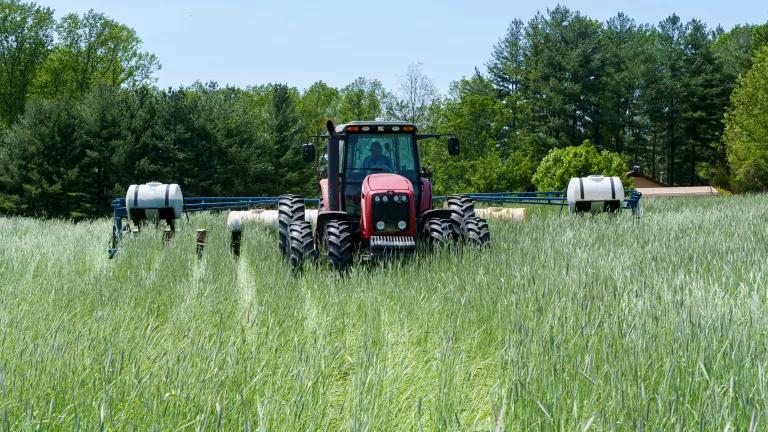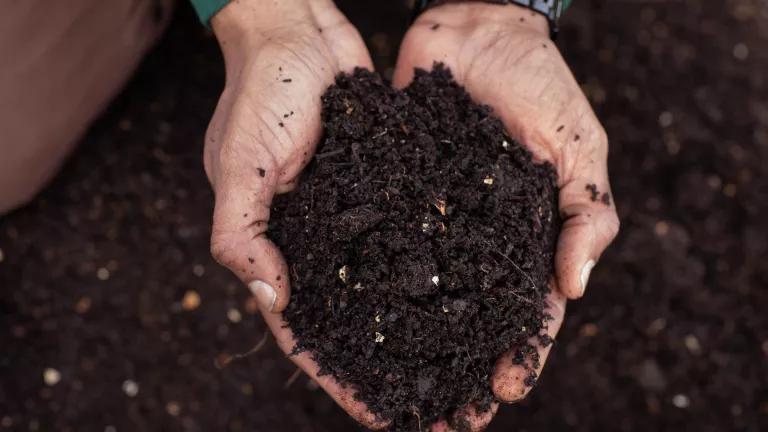European Action Halves Livestock Antibiotic Use
NRDC's latest research, using the most recent U.S. and European data, tells the story the FDA cannot or will not tell. U.S. farm stewardship of antibiotics isn't improving. We highlight three successful steps from Europe that could help turn the tide in the U.S.

Dreamstime
U.S. Efforts Lag Far Behind, New Analysis Show
The critical factor driving the worsening global spread of antibiotic-resistant bacteria—also known as ‘superbugs’—is antibiotic overuse. Around 73 percent of the medically important antibiotics (hereafter referred to simply as ‘antibiotics’) sold worldwide are for use in livestock production. To be sure some uses of antibiotics are appropriate, but most uses of livestock antibiotics are avoidable and are therefore unnecessary, according to experts. Historically, that has been true for the U.S. livestock sector, which alone accounts for around 7% of the world’s entire livestock consumption of these antibiotics.
The U.S. Food and Drug Administration (FDA) has committed on paper to fostering antibiotic stewardship on livestock farms. A new NRDC analysis shows that paper commitment has not translated into consistent, measurable improvements to antibiotic use on the ground. Instead, we determined the U.S. livestock sector’s stewardship of these precious medicines had worsened by nearly 6% since 2017, rather than improved.
The analysis uses European methods to compare the intensity of livestock antibiotic use in the U.S. and Europe on an apples-to-apples basis. Our findings, combined with just-released 2021 data from Europe, suggest that a recent call for U.S. policymakers to establish a national target to reduce U.S. livestock antibiotic use by 50% is, if anything, not ambitious enough.
High-Intensity Antibiotic Use Persists in the U.S. Livestock Sector
NRDC’s analysis shows that the U.S. livestock sector as a whole used antibiotics at an intensity of 170.8 mg/kg of animal in 2020. The 2020 level of use is about 30% lower than it was in 2011. That modest decline should prompt more handwringing than applause for what it says about the FDA’s lack of antibiotic stewardship success to date, especially when compared to the stewardship gains made in Europe. Over the same span of time, the intensity of antibiotic use in European livestock production declined 43%, to a rate of 91.6 mg/kg of animal in 2020.
Since NRDC completed its analysis, more recent European data were released for 2021 (U.S. data are not yet unavailable for 2021). The latter data show that Europe’s rate of livestock antibiotic use continues to fall, dropping by nearly half (47%) since 2011. While European stewardship of these medicines consistently improves, almost the entire 30% U.S. decline since 2011 took place over just two years, from 2015 to 2017. This was the period when makers of antibiotics for animal feeds first agreed to stop marketing them for growth promotion, before such uses were finally made illegal in January 2017. In marked contrast to Europe, there is no evidence that livestock antibiotic use in the U.S. has improved since 2017—rather, NRDC’s analysis indicates the intensity of U.S. livestock antibiotic use rose nearly 6% from 2017 to 2020.
The Roots of Europe’s Success
The new European data lend additional weight to NRDC’s finding that nearly all of the top livestock-producing countries in continental Europe have curbed their intensity of antibiotic use since 2011 by even more than 50%. By 2021, the rates of use in Germany, Spain, and France—ranked 1st to 3rd in the size of their livestock populations—had fallen by 65%, 53%, and 55%, respectively.
The seed for Europe’s public health success was planted quite a bit earlier, when the European Commission adopted a new Animal Health Strategy in 2007. A core part of the strategy, deemed “Prevention is better than cure”, was for national governments in Europe to actively work with partners to prevent animal health problems before they occur. Critical actions later implemented by European officials to bring about reductions in antibiotic overuse are aligned with this same strategy. As Stella Kyriakides, the European Commissioner for Health and Food Safety, recently stated:
“In the EU, the majority of [antibiotics] are administered to animals, to which the same basic principle applies as for humans: to treat illness and keep them healthy. However, it is possible to reduce infections and the need for treatment in the first place, through improved hygiene practices and vaccination, as well as—in the case of farmed animals—biosecurity and animal husbandry. Limiting the use of [antibiotics] must be the priority.”
European public health officials continue striving to improve livestock antibiotic stewardship. As part of the EU’s “Farm to Fork” strategy, there is a new goal to further reduce rates of antibiotic use in European livestock production from 91.6 mg/kg in 2020 (and 86.2 mg/kg in 2021) to just 59.2 mg/kg by 2030.
A Stewardship Roadmap for U.S. Policymakers to Follow
To protect public health, and slow the spread of superbugs, NRDC urges immediate adoption of more of the policy reforms proven to work in Europe. National targets and hard timelines for achieving meaningful reductions in antibiotic use are one good example.
Given stalled U.S. efforts to lower high-intensity livestock antibiotic use, the time is ripe for U.S. policymakers to set a goal for at least a 50% use reduction by 2025 (relative to a 2010 baseline). If the U.S. livestock sector were to meet that goal, its rate of antibiotic use in 2025 would be no more than 123 mg/kg of livestock. That would be a big improvement, but still no match for what Europe has already achieved.
A neat fit with the establishment of a national use-reduction target would be for the U.S. to finally collect better data on antibiotic use. On-farm use data are critical for tracking progress in reaching those targets, but they are also needed to identify patterns of antibiotic overuse so that effective measures can be taken to eliminate or reduce it. A new European law took effect in early 2022 requiring all 27 EU member countries to soon collect antibiotic use data at the farm level. We urge the US to follow suit if it hopes to fully realize its paper commitment to antibiotic stewardship and if it intends to better protect public health.




